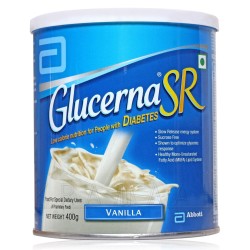Search Criteria
Products meeting the search criteria
Brand: Radiant Pharmaceuticals Ltd.
Product ID: Accu-Chek Active
Check your blood glucose level at home with this pack of 50 test strips designed for Accu-Chek Active glucometer. Simple and effective, these test strips will help you regularly keep tabs on diabetes.Easy and HygienicThese test strips are designed to spread the blood quickly and hygienically over th..
Tk1,330 Tk1,400
Brand: Ibn-Sina Pharmaceuticals Ltd.
Product ID: Aluminium Hydroxide + Magnesium Hydroxide + Simethicone
GenericAluminiumhydroxideType:SuspensionQuantity: 200ml bottlePrice: 65 TK..
Tk2
Product ID: DSF-26
CYPRINA fruit juices are 100% pure. Pure with no additives, made from concentrates naturally derived from the fruits.At present more than 25 fruit juices and nectars are sold under the FONTANA brand...
Tk200
Product ID: DSF-9
NUTRI RICH DIABETIC BISCUITS Net Weight: 70gm Manufacturer: DanishOnly BIRDEM tested biscuit brand in Bangladesh.First ever specialized biscuit for diabetic patients...
Tk25
Product ID: Strips
Diavue 50 Strips The Blood Glucose Test Strips are used with the one touch ultra easy blood glucose monitoring system for the quantitative measurement of glucose (sugar)in fresh capillary whole blood samples drawn from the fingertips. The Blood Glucose Test Strips ultra easy blood glucose monitoring..
Tk645
Product ID: DSF-33
ECLIPSE MINTS WINTERROST SUGAR FREE CHEWING GUMNet Weight: 35gmQuantity: 50Mints in each box.Type: Sugar-freegum.This Eclipse Chewing Gum and mints provideincredibly fresh breath solutions and helps to kill germs that cause breath...
Tk180
Product ID: DSF-16
EQUAL SWEETENER O CALL 50 Packets available in a boxZero Calorie SweetenerOne packet is as sweet as 2teaspoons of sugarOne packet contains less than 1 gramof carbohydrateEqual is suitable for individualswith diabetes..
Tk320
Product ID: DSF-7
GLUCERNA SR DIABETES MILK (400 Gm)Brand: AbbottVanilla flavoredSugar-free 400gm weight..
Tk2,050
Product ID: DSF-38
GOLDEN COUNTRY QUICK COOKING WHITE OATS..
Tk160
Product ID: DSF-20
HIBISCUS MUSHROOM CAN 425gmHigh Quality cooked canned mushroomsFreezingProcess: IQFColor: WhiteSource: CultivatedShelf Life:3 YearsWeight (kg): 425gmSize: 2-3cmPlace of Origin: Shanxi,China (Mainland)..
Tk110
Product ID: DSF-5
Horlicks Light Original Jar (UK) 500 gmProduct DescriptionInstant low fat malted food drinkfacebook.com/horlicksTo find out more about the goodness of Horlicks, visit us at www.horlicks.co.ukPer32g serving Calories 118kcal 500kJ 6%, Sugars 15.8g 18%, Fat 0.9g 1%, Saturates 0.5g 3%, Salt 0.5g 8% of a..
Tk600

-250x250h.jpg)










